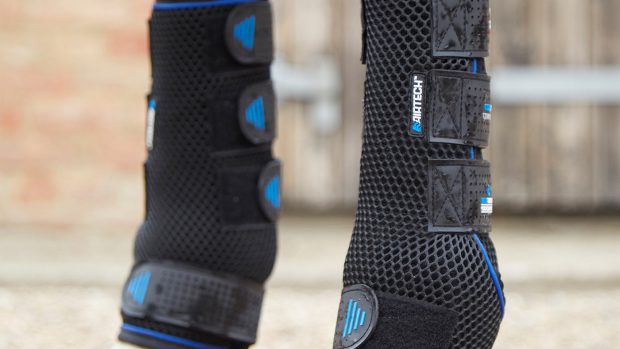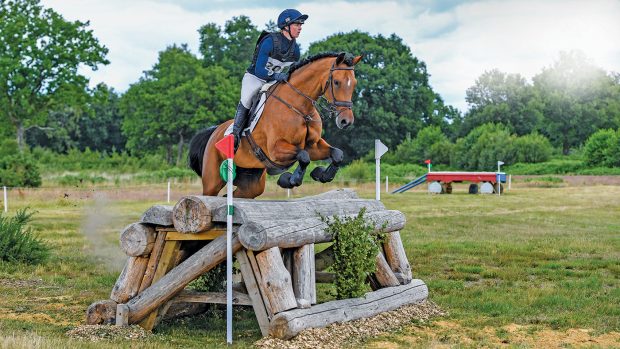Elite event horses (intermediate level or above) are six times more likely to sustain an injury of the superficial digital flexor tendon compared with non-elite event horses, according to a recent study by the Animal Health Trust. Elite event horses also had a considerably higher risk of tendon injury compared with general purpose horses.
The study analysed all the clinical records of horses referred for lameness investigation between 1998 and 2003. Horses were categorised by the discipline in which they competed, or were described as general purpose (including those who competed only at unaffiliated competitions); whether they were upper level (elite competition horses) or non-elite; and the type of injury that caused their lameness.
National hunt racehorses and elite show jumpers (grade A or international horses) were also at a higher risk of injury to a superficial digital flexor tendon. Both elite and non-elite dressage horses were at particularly high risk of sustaining an injury to a hindlimb suspensory ligament.
Why do the injuries occur?
The elite-level show jumpers and dressage horses were older than the rest of the horses, while national hunt horses are older than flat racehorses. It is known that degenerative ageing changes occur in the tendons and ligaments and, thus, with increasing age these effectively become weaker and are more at risk of injury.
The biomechanical forces on the tendons and ligaments are also influential. For example, when galloping fast there will be over-extension of the front fetlocks, which places greater strain on the superficial digital flexor tendons than work at slower speeds. This places racehorses and upper-level event horses at potentially increased risk of injury.
For horses who jump, the higher the fences, the more strain placed on the forelimb superficial digital flexor tendons when they land. This may be another reason why elite-level show jumpers are at increased risk of injury.
It has been my clinical impression when working as a vet at one- and three-day events that tendon injuries have also been influenced by the going. When it has been wet and slippery or there has been deep, holding going, tendon injuries are more frequent than when ground conditions are ideal.
It will be interesting to see whether the loss of the steeplechase phase in three-day events decreases the frequency of tendon injuries in upper-level event horses, or whether the increasing demands of modern day cross-country courses will counterbalance this.
We are unlikely to be able to eliminate tendon injuries, but we must continue to work to understand better how the tendons and ligaments can be trained to minimise the risk.
Dressage horses
Although injuries of the upper part of the suspensory ligament in hindlimbs were more common than injuries lower down the leg in all disciplines, dressage horses were at particular risk of proximal suspensory desmitis.
Dressage horses are largely selected for training based upon the quality of their movements and their mental ability to be trained. The textbooks imply that at trot a horse moves in diagonal pairs, with the left hind and right forelimb hitting the ground simultaneously, followed by the right hind and left forelimb. However, this is not always the case and a proportion of the best-moving horses actually show advanced diagonal placement that is, the hindlimb of a diagonal pair makes ground contact before the forelimb. This means that for a short period the horse is bearing all its weight on just one limb.
This effect may be magnified when the horse is working with increased levels of collection. This places increased strain on the suspensory apparatus. Slow motion video analysis has shown that, contrary to the rules of dressage, advanced diagonal placement occurs invariably in canter pirouette and frequently in high-scoring piaffe and passage.
A team at the Animal Health Trust, in conjunction with British Dressage, is currently investigating the relationship between arena surfaces and lameness. All owners of horses affiliated with British Dressage have been sent a detailed questionnaire asking the level at which the horse works, the frequency with which it is trained, the characteristics of the arena surface on which it works regularly, how the surface is maintained, how the arena surface alters under different weather conditions, and whether or not the horse has had any lameness and if so, what was the underlying cause.
We hope that if enough of these questionnaires are returned we can develop some meaningful conclusions about what are the best types of arena surface properties to minimise the risk of injury. The validity of the conclusions are dependent on a high return rate, so we urge all members to complete a form for every horse, to enable us to make some progress in this important area.
- This veterinary feature was first published in Horse & Hound (9 February, 2006)

SUBSCRIBE TO HORSE & HOUND AND SAVEEnjoy all the latest equestrian news and competition reports delivered straight to your door every week.To subscribe for just £1.43 a copy click here >>





